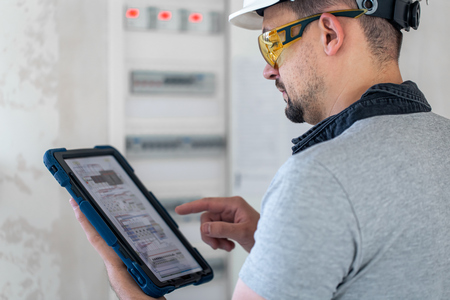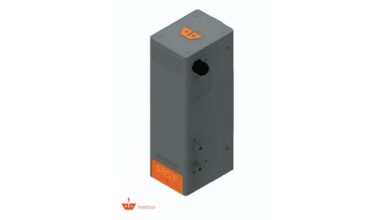Unpacking Benefits of Early Implementation of Monitoring Based Commissioning

By Charles W. Jackson
Integrating monitoring based commissioning into a building has many advantages. There is an even more significant benefit if MBCx is implemented during the design and construction of a project. Benefits include synergies in points if pursuing Leadership in Energy and Environmental Design certification (Enhanced Commissioning Option #2 and possibly Advanced Energy Metering), as well as validating the accuracy of the metering before the building is in use.
The simple truth about MBCx is most equipment purchased for new projects comes equipped with internal metering and the ability to transmit data points across multiple communication protocols. These features are standard in most equipment, but some are available as options. Ultimately, deciding on MBCx early in the design phase dramatically reduces the cost by adding those options to the equipment instead of installing them separately after installation.
Going beyond the simple truth, discussion during the schematic phase, specifically as part of the owner’s project requirements, provides the most significant benefit. Having these discussions early allows for strategic equipment selection, ensuring the information needed for MBCx will be provided. If the project is pursuing LEED certification and elects to pursue the enhanced commissioning option #2 credit, the project team can push for dedicated drawings for the monitoring.
Implementing MBCx early becomes an added benefit for the entire project if the control’s contractor is engaged early on for feasibility and throughout the project. On top of additional points to help the project get closer to certification, the framework is now established and proven to give the operations team a head start in managing their building. These decisions traditionally are not made until after the building is in operation and the project team has disbanded.
In the design phase, incorporating these requirements into the specifications will ensure the team is moving forward in the right direction. The first steps are ensuring meters are installed and that key performance indicators will have trend capabilities. Going a step further is describing what points need trending, meter location (upstream or downstream from the source of power or flow) and what metrics are needed to measure, offer a greater chance of success from the start. Having these ideas represented graphically in the contract drawing sets allows the construction team to see the vision and understand the importance of this program.
Another benefit of choosing MBCx during the project is the meters can assist in testing. Once the accuracy of the meters are verified, incorporate them into test procedures to verify the functionality of other equipment without needing to bring in temporary meters. The controls contractor should be engaged earlier in the process for MBCx, which can help expedite the project’s completion. The trend data verified during commissioning can serve as a baseline for when the building is occupied, providing a seamless transition with real-time data where the frequency of the reporting and KPIs that have been established and displayed will significantly assist in the building’s turnover. This data becomes invaluable to the operating staff during that crucial first year of occupancy.
One of the most significant advantages of MBCx is awareness. Truly understanding what a building is producing is the first step to finding strategies to reduce energy usage. MBCx is a process that utilizes automated data analytics to continuously monitor systems’ performance over a building’s life. MBCx creates the framework to genuinely understand and see how a building is performing in real-time.
From a contractor’s point of view, MBCx will help identify issues quickly when called during the first year of the warranty. This could limit nuisance calls and help educate the end users on how to run the facility. With MBCx required from the start, the controls contractor is on board early and can understand more of the owner’s end goals. Automated testing can be made possible by connecting the system earlier in construction. This will aid in troubleshooting and pretesting systems before testing them with the commissioning provider. Overall, it could be a benefit in helping meet demanding project schedules.
Monitoring based commissioning is one of the fundamental building blocks to help a building operate efficiently. Continuous monitoring has provided facilities with tremendous savings and minimal additional costs. Having periodic performance evaluations and reviews with end users allow for optimization of buildings, understand what causes increased energy usage and answer why the increase is happening. This also helps the operational staff become more knowledgeable about their building, which will help decrease the time wasted on traditional trouble calls. The advancement in fault detection and analytics software takes this approach to the next level.
Systems can be isolated to learn building tendencies with established monitoring and trending. One of the best examples, working on a large campus, was correlating the valve position with the flow of water on a chilled water system. Over time, although the valves were closed, water still flowed downstream of the closed valve. After verifying the sensors were correct and calibrated, it was proven that those valves could not fully close. Replacing the valves provided significant savings for the plant and allowed them to reduce the amount of chilled water they produced annually.
Looking ahead, as the industry dictates more restrictive energy mandates, facilities must be able to document their performance and reduce energy consumption to avoid any penalties. For instance, the latest International Energy Conservation Code requires installing meters on panels. States adopting energy performance standards penalize buildings with low EUI or Green House Gas Emissions. To accomplish this goal, be familiar with large energy consumers and what strategies can be employed to reduce load profiles. Understanding a building’s Energy Usage Index and having the data set up to capture these metrics will put a facility in a great position to be flexible for any new laws that come into play. The investment in MBCx at the beginning of the project will benefit the building throughout its entire life.
Charles W. Jackson III, P.E., PMP, CxA, CEM, LEED AP BD+C, is electrical department lead, Mid-Atlantic Cx, at CMTA.
Editor’s Note: This topic will be further discussed at CxEnergy 2025 Conference & Expo, which will take place April 28-May 1 in Charlotte, North Carolina.
Image by Freepik



